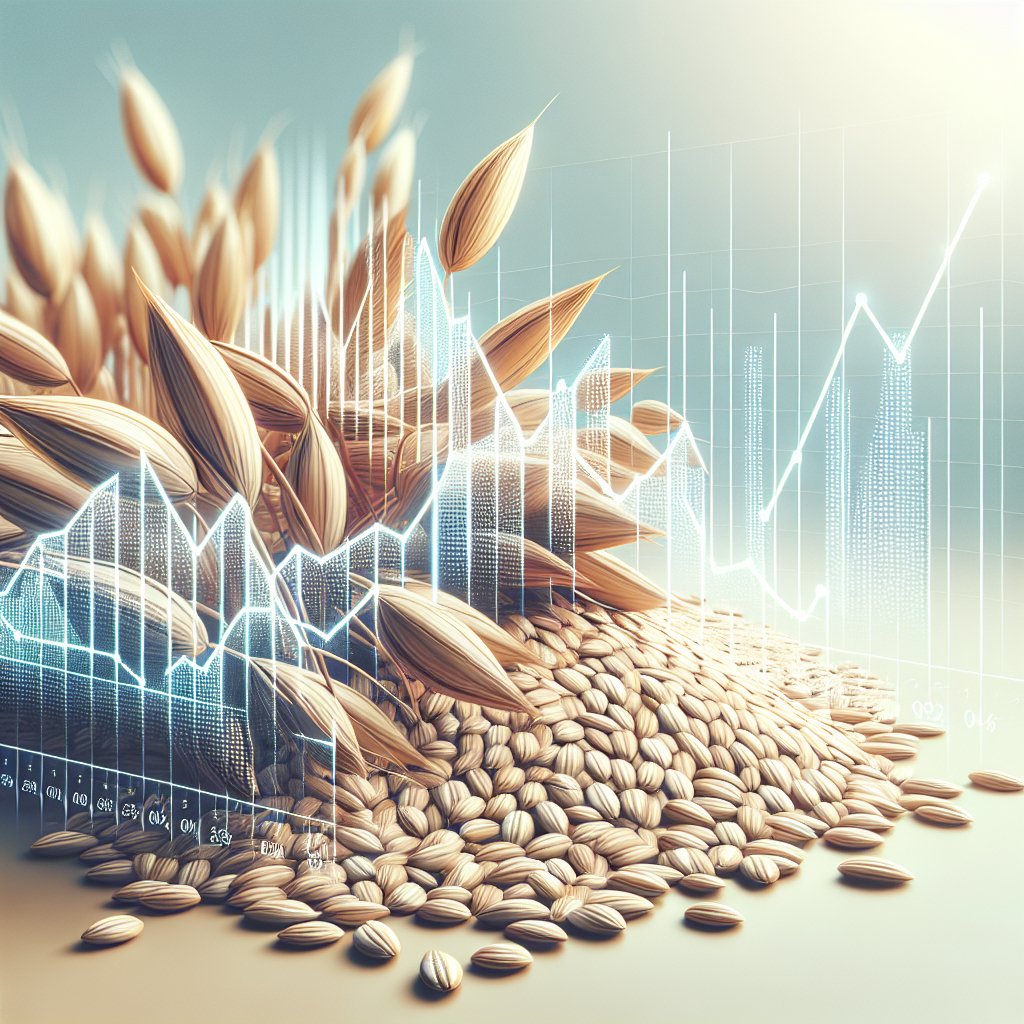The analysis of oat prices for the year 2024 is crucial for farmers, investors, and stakeholders in the agricultural sector. Understanding the factors that influence these prices can help in making informed decisions regarding production, marketing, and investment strategies. This article delves into the expected trends, market dynamics, and potential challenges that may affect oat prices in the upcoming year.
Market Overview and Historical Context
Oats have long been a staple crop in many regions, valued for their versatility and nutritional benefits. Historically, the price of oats has been influenced by various factors, including weather conditions, global demand, and competition from other grains. In recent years, the market has seen fluctuations due to changing consumer preferences, increased health awareness, and the rise of alternative grains.
In 2023, oat prices experienced significant volatility, driven by supply chain disruptions and varying yields across different regions. The impact of climate change has also become more pronounced, with extreme weather events affecting crop production. As we look ahead to 2024, it is essential to analyze these historical trends to better understand the potential price movements.
Factors Influencing Oat Prices
Several key factors will play a role in determining oat prices in 2024:
- Weather Conditions: Weather remains one of the most unpredictable factors affecting agricultural prices. Droughts, floods, and unseasonable temperatures can drastically impact oat yields. Farmers must stay informed about weather forecasts and adapt their practices accordingly.
- Global Demand: The demand for oats has been on the rise, particularly in the health food sector. As more consumers seek out gluten-free and nutritious options, the demand for oats is expected to increase. This trend could drive prices higher, especially if supply does not keep pace with demand.
- Competition from Other Grains: Oats compete with other grains such as wheat, barley, and corn. Changes in the prices of these grains can influence oat prices. For instance, if wheat prices rise significantly, some farmers may choose to plant more wheat instead of oats, potentially reducing oat supply.
- Export Markets: The international market plays a crucial role in determining oat prices. Countries that are major producers and exporters of oats, such as Canada and Russia, can influence global prices. Trade agreements and tariffs can also impact the flow of oats between countries.
- Technological Advancements: Innovations in farming techniques and oat processing can lead to increased efficiency and higher yields. As farmers adopt new technologies, the overall supply of oats may increase, which could stabilize or lower prices.
Price Projections for 2024
Based on the analysis of the aforementioned factors, several projections can be made regarding oat prices in 2024. While it is impossible to predict prices with absolute certainty, trends can provide valuable insights.
Short-Term Projections
In the short term, it is anticipated that oat prices may experience some fluctuations due to seasonal factors. The harvest season typically brings an influx of supply, which can lead to lower prices. However, if adverse weather conditions affect yields, prices may remain stable or even increase. Analysts suggest that prices could range between $3.00 to $4.00 per bushel in the first half of 2024, depending on the overall crop performance.
Long-Term Trends
Looking further ahead, the long-term outlook for oat prices appears positive. The growing trend towards healthy eating and the increasing popularity of oats as a breakfast option are expected to sustain demand. Additionally, as more consumers become aware of the environmental benefits of oats compared to other grains, this could further bolster the market.
By the end of 2024, prices could potentially rise to between $4.00 and $5.00 per bushel, particularly if supply constraints arise due to weather-related issues or increased global demand. Farmers and investors should remain vigilant and adaptable to market changes to capitalize on these trends.
Challenges Ahead
Despite the positive outlook, several challenges could impact oat prices in 2024. Farmers must navigate a complex landscape of environmental, economic, and market-related issues.
Environmental Challenges
Climate change poses a significant threat to agricultural production, including oats. Unpredictable weather patterns can lead to crop failures, which in turn can drive prices up. Farmers must invest in sustainable practices and technologies to mitigate these risks. Additionally, water scarcity in certain regions may limit oat production, further impacting supply and prices.
Economic Factors
The global economy is another critical factor influencing oat prices. Inflation, changes in consumer spending, and fluctuations in currency exchange rates can all affect the agricultural market. For instance, if inflation continues to rise, the cost of inputs such as fertilizers and fuel may increase, squeezing farmers’ profit margins and potentially leading to higher prices for consumers.
Market Volatility
Market volatility is a constant in agriculture, and oats are no exception. Sudden changes in consumer preferences, trade policies, or global events can lead to rapid price fluctuations. Farmers and stakeholders must remain agile and informed to navigate these uncertainties effectively.
Conclusion
The analysis of oat prices for 2024 reveals a complex interplay of factors that will influence the market. While the outlook appears positive, with increasing demand and potential price growth, challenges such as environmental issues and economic volatility must be addressed. By staying informed and adapting to changing conditions, farmers and investors can position themselves for success in the evolving oat market.
As we move forward, continuous monitoring of market trends, weather patterns, and consumer preferences will be essential for making informed decisions. The agricultural sector must embrace innovation and sustainability to ensure a resilient future for oat production and pricing.




